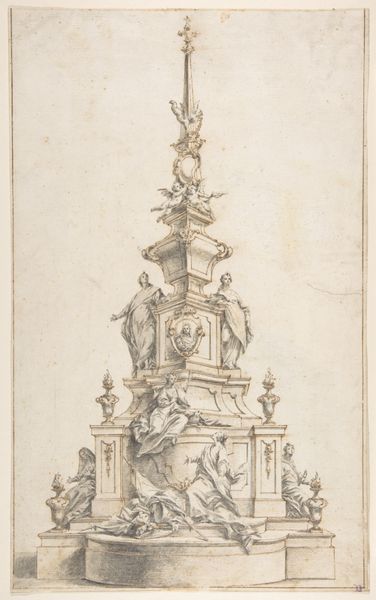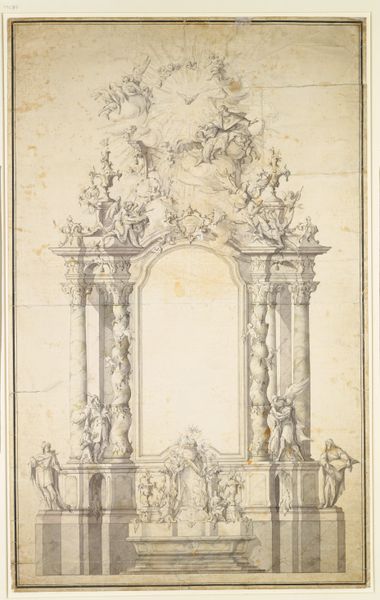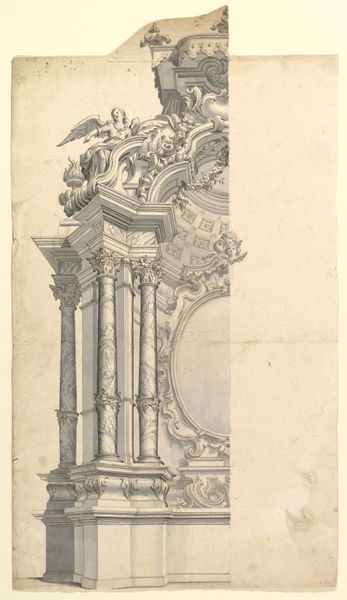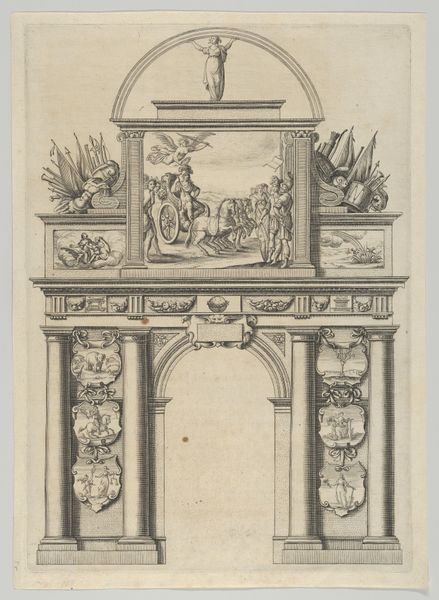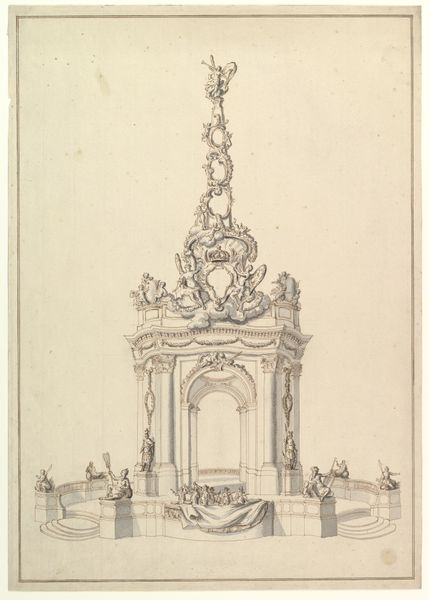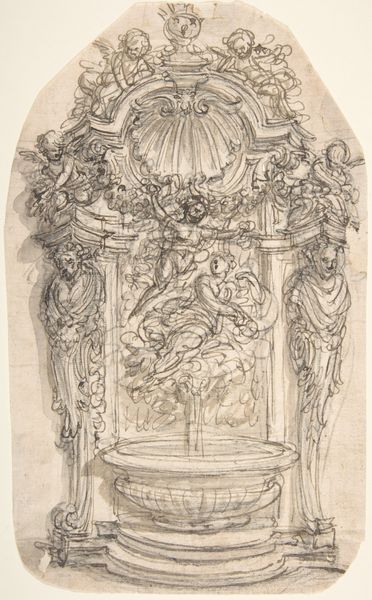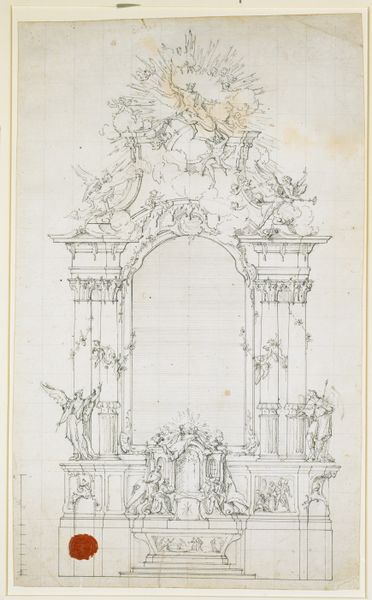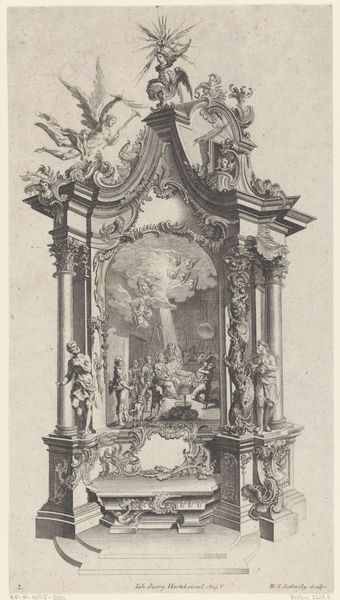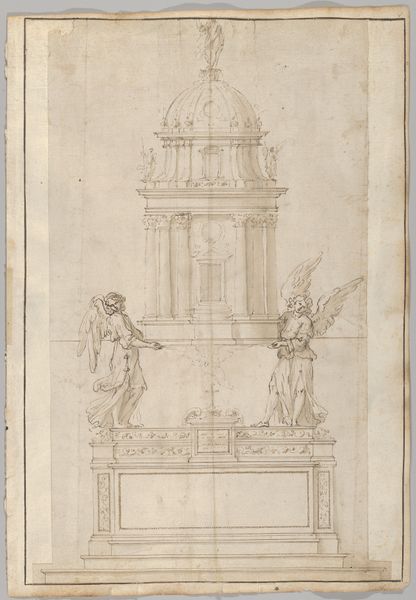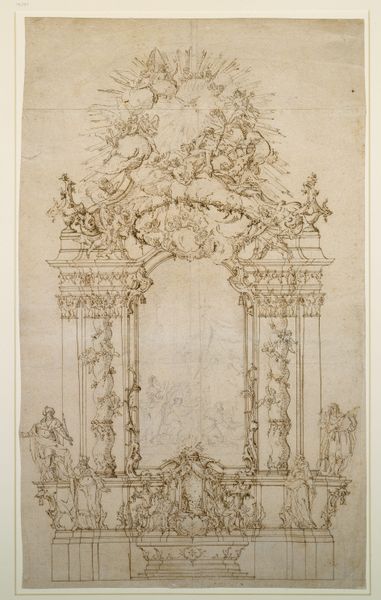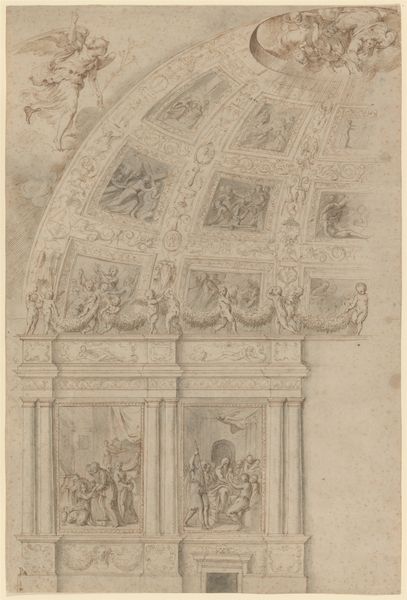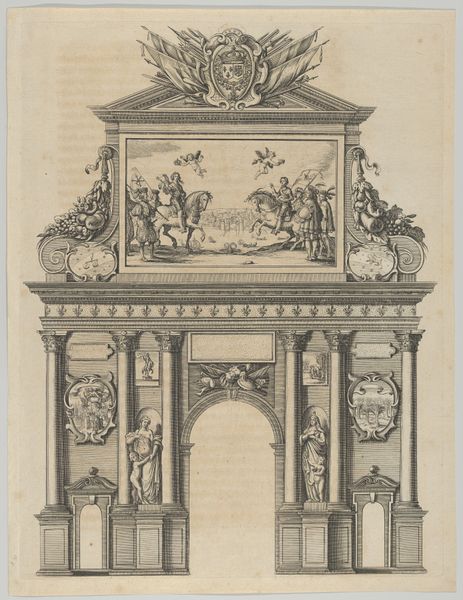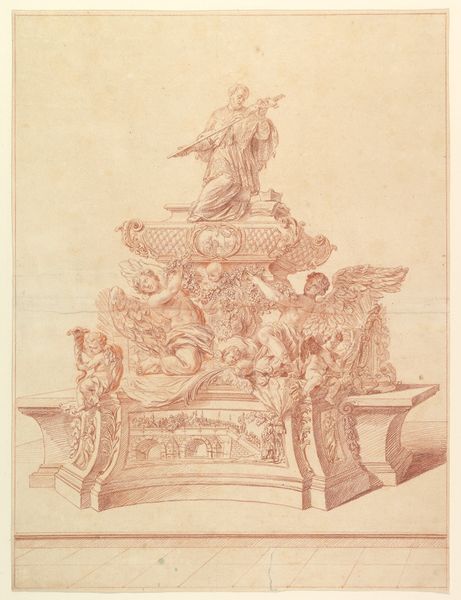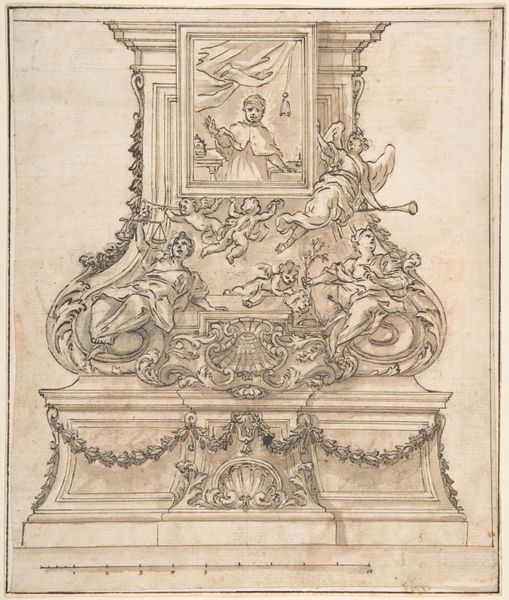
Design for a Temporary Structure for a Festival Celebration 1700 - 1735
0:00
0:00
drawing, print, ink, architecture
#
drawing
#
baroque
#
ink painting
# print
#
ink
#
history-painting
#
architecture
Dimensions: 27-5/8 x 11-1/4 in. (70.2 x 28.6 cm); composed of two sheets, joined two-thirds from top.
Copyright: Public Domain
Curator: Look at this extraordinary, albeit ephemeral, design for a festival structure! This drawing, crafted anonymously between 1700 and 1735, is currently held at the Metropolitan Museum of Art. It employs ink and possibly print techniques. Editor: It strikes me immediately as both grand and delicate. The layers of ornate details, rendered in what looks like ink, suggest a massive temporary monument, yet the wispy lines and monochromatic palette evoke a sense of fleeting beauty. Curator: Indeed. Think about the social context: temporary structures like this were often erected for celebrations, royal entries, or other public events. They served as potent symbols of power, status, and civic pride. They played an integral role in creating collective memories. Editor: Right. It begs the question, though, of who built such a thing? What workshops were involved? How many laborers and for what pay? Were specific craftsmen, such as plasterers, or gilders recognized, or were their efforts erased by the overarching aesthetic? Curator: Excellent points. And considering its impermanent nature, it is interesting how much artistic labor and high-quality materials were expended on this object which highlights social disparities, patronage and performative aspects. Editor: It also appears that this kind of monument blends aspects of sculpture, architecture, and stage design blurring categories, so how was this blurring understood back then, in the socio-cultural understanding of the day? It appears as some attempt to translate power through materiality and size in a manner quite spectacular! Curator: I agree; this elaborate structure reflects the cultural emphasis on visual spectacle. Editor: Seeing this artwork encourages reflection on those who contribute invisibly to create visual and ephemeral spectacle and asks questions about class and representation through power constructs. Curator: It encourages looking closely at history beyond monumental grand narratives and focusing on materials and working relationships. Editor: It certainly reveals how festivals once mobilized material resources for dramatic visual and social effect, and invites one to ponder what truly lasts after all.
Comments
No comments
Be the first to comment and join the conversation on the ultimate creative platform.
